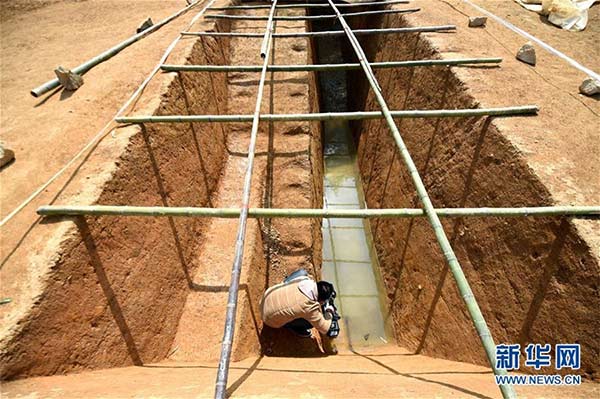
An emblem on a jade artifact unearthed at the Liangzhu site, dating back 5,300 years. (Photo Provided to China Daily)
The Liangzhu Archaeological site in Hangzhou of Zhejiang province was officially submitted Friday to UNESCO to compete for recognition as a World Cultural Heritage Site in 2019.
The Liangzhu Archaeological Site is a comprehensive archaeological site representing the Chinese civilization of prehistoric rice agriculture that existed between 3,300 BC and 2,300 BC. It was a regional center of authority and faith during earlier times, which had a large-scale capital city, a complicated functional hydrological system and tombs in different grades, as well as series of jade wares.
The ruins of ancient Liangzhu city were discovered in 2007, and then large dam sites surrounding the Liangzhu ancient city were unearthed successively after 2009. Archaeologists also found that the Liangzhu ancestors started to use characters about 5,000 years ago, which pushed forward China's history of writing more than 1,000 years.
With more than 500 sites excavated to date, the primitive culture has been found to have played an important role in shaping ancient Chinese civilization.





















































